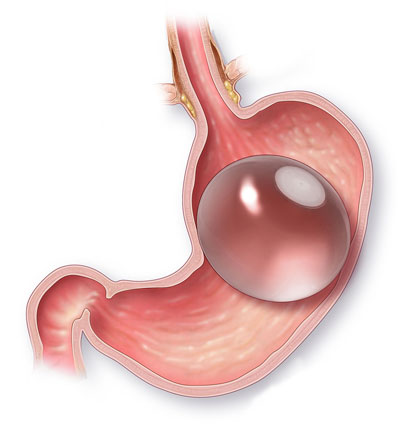News - Mon, 09/18/2017 - 11:15
Gastric Balloon: An alternative for obesity treatment
Last update 09/18/2017 - 11:21

We would like to inform that intra-gastric balloon procedure now can be done at the Hospital to treat obesity on overweight, obese patients. This procedure was performed successfully on a Vietnamese obese patient by Dr. Rémy Romney, Gastro-enterologist.
Intra-gastric balloon placement is designed to assist weight loss by partially filling the stomach and inducing satiety.
This procedure is realized under general anesthesia. The doctor will insert a special balloon inside the patient’s stomach by endoscopy through the mouth before filing it with saline (from 400 to 650cc) causing it to expand into a spherical bezoar and move freely within the stomach. It acts to occupy a certain physical space within the gastric cavity that helps patient obtain satiety during the intake, eat less.
The placement takes about 20 minutes. The patient just needs to stay at the Hospital for a few hours following the procedure.
The balloon remains in the stomach for maximum 6 months. After this period, it can also be removed using the same approach, stomach endoscopy.
The balloon is to be used in conjunction with a long-term supervised diet and behavior modification program designed to increase the possibility of long term weigh-loss maintenance.
Who are the candidates?
- Pre-surgical temporary use for weight loss in severe obese patients BMI 40 and above or 35 with comorbidities prior to obesity or other surgery to reduce surgical risk.
- Temporary use for weight loss in obese patients (BMI 30-39) who have significant health risks related to their obesity and who have failed to achieve and maintain weight loss with a supervised weight control program. The balloon is to be used in conjunction with a long term supervised diet and behavour modification program designed to increase the possibility of long term wight loss program maintenance.
- Temporary use for weight loss in severely obese patients BMI40 or 35 with comorbidities who are not candidates for obesity surgery, in conjunction with a long term supervised diet and behavour modification program designed to increase the possibility of long term weight loss maintenance.
The material used to fabricate this device have been tested according to ISO 10993 the international Standard for biological evaluation of medical devices
How to calculate BMI:
BMI = Weight in kilograms divided by height in meters squared (weight (kg) / [height (m)]2)
Example: Patient: Weight 95kg, Height 1.62 m
95/ (1.62*1.62) ≈ 36.2
For further information regarding this service, please contact us at: (84-24) 3577 1100 or send us an inquiry here



